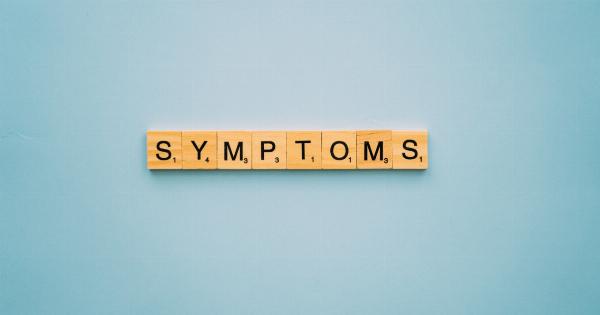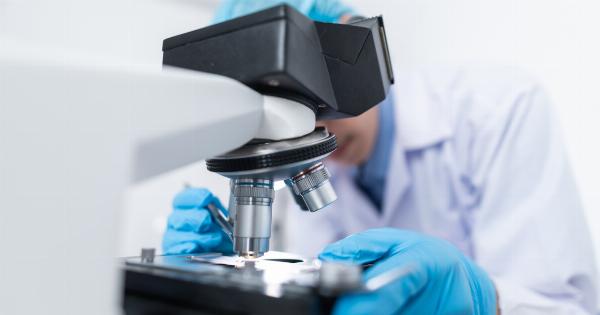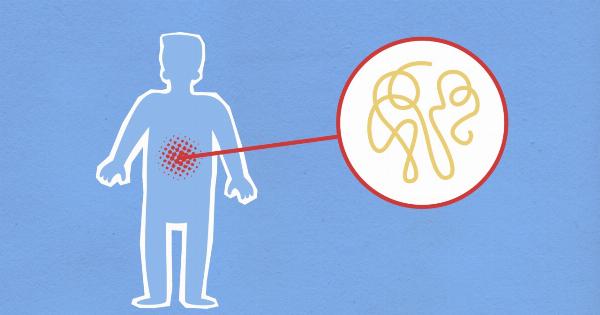Kidney colic, also known as renal colic, is an intense and excruciating pain caused by the obstruction of urine flow from the kidneys. It is a symptom rather than a disease itself and is usually a result of kidney stones or other urinary conditions.
Recognizing and understanding the symptoms of kidney colic is crucial for prompt diagnosis and proper treatment. This visual guide will help you familiarize yourself with the key symptoms to look out for.
The Anatomy of Kidney Colic
Before diving into the symptoms, let’s first understand the anatomy of kidney colic. The kidneys are two bean-shaped organs located on each side of the vertebral column, just below the ribcage.
Their main function is to filter waste products and excess fluid from the blood to produce urine.
Kidney colic occurs when the urinary tract, which includes the kidneys, ureters, bladder, and urethra, becomes obstructed.
This obstruction can be caused by various factors such as kidney stones, blood clots, tumors, or narrowing of the ureters due to inflammation or scarring.
Recognizing the Symptoms
Kidney colic is characterized by sudden and severe pain in the abdominal or flank region. The pain often radiates from the back to the groin area and may come and go in waves. Here are the key symptoms to watch out for:.
1. Intense Abdominal or Flank Pain
The hallmark symptom of kidney colic is excruciating pain. The pain is typically felt on one side of the abdomen or flank region. It can be throbbing, sharp, or stabbing, and may last from a few minutes to several hours.
The intensity of the pain can be debilitating and may require immediate medical attention.
2. Pain Radiating to the Groin
Kidney colic pain often extends from the back to the groin area. It follows the path of the ureter, the tube that connects the kidneys to the bladder. This radiating pain may cause discomfort in the lower abdomen, genitals, and inner thigh.
3. Hematuria
The presence of blood in the urine, known as hematuria, is another common symptom of kidney colic. The urine may appear pink, red, or brownish in color. Blood in the urine should never be ignored and should prompt immediate medical attention.
4. Frequent Urination
In some cases, kidney colic can lead to frequent urination. The urge to urinate may be constant, and the volume of urine passed may be reduced. This symptom is often accompanied by a feeling of incomplete bladder emptying.
5. Nausea and Vomiting
Pain from kidney colic can trigger nausea and vomiting. These symptoms are a result of the body’s physiological response to intense pain.
If you experience persistent nausea and vomiting along with other symptoms, it is crucial to seek medical help.
6. Fever and Chills
In cases where kidney colic is caused by an infection, fever and chills may be present. The obstruction in the urinary tract can lead to a buildup of bacteria, causing an infection.
If you have a high fever alongside the aforementioned symptoms, urgent medical attention is necessary.
7. Cloudy or Foul-Smelling Urine
Certain urinary conditions that cause kidney colic can lead to changes in urine appearance and smell. Cloudy or malodorous urine may indicate the presence of an infection or other underlying issues.
These changes in urine characteristics should be monitored and reported to a healthcare professional.
8. Painful or Burning Sensation During Urination
Kidney colic can cause irritation in the urinary tract, resulting in a painful or burning sensation during urination. This symptom is more commonly associated with urinary tract infections but can also occur due to kidney stones or other obstructions.
9. Abdominal Tenderness
When the kidneys or surrounding structures become inflamed or infected, abdominal tenderness may develop. Gentle palpation or pressure in the affected area may elicit pain or discomfort.
10. Unexplained Weight Loss
In some cases, kidney colic accompanied by persistent urinary symptoms may lead to unexplained weight loss. This is often a consequence of underlying conditions affecting renal function.
Seeking Medical Attention
If you experience any combination of these symptoms, it is essential to seek medical attention promptly. Kidney colic can be a sign of an underlying urinary condition that requires diagnosis and treatment by a healthcare professional.
Early diagnosis and intervention can minimize pain, prevent complications, and ensure proper management of the underlying condition.
Your healthcare provider will conduct a thorough evaluation, which may include physical examination, urine tests, imaging studies, and blood tests to identify the cause of your symptoms.
Note: The information provided in this guide is for educational purposes only and should not replace professional medical advice..
Conclusion
Recognizing the symptoms of kidney colic is crucial for early detection and appropriate management. The intense and debilitating pain, along with other associated symptoms like hematuria, nausea, and fever, should never be ignored.
If you experience these symptoms or suspect kidney colic, seek medical attention immediately. Remember, timely diagnosis and treatment can make a significant difference in relieving pain and preventing complications.




























